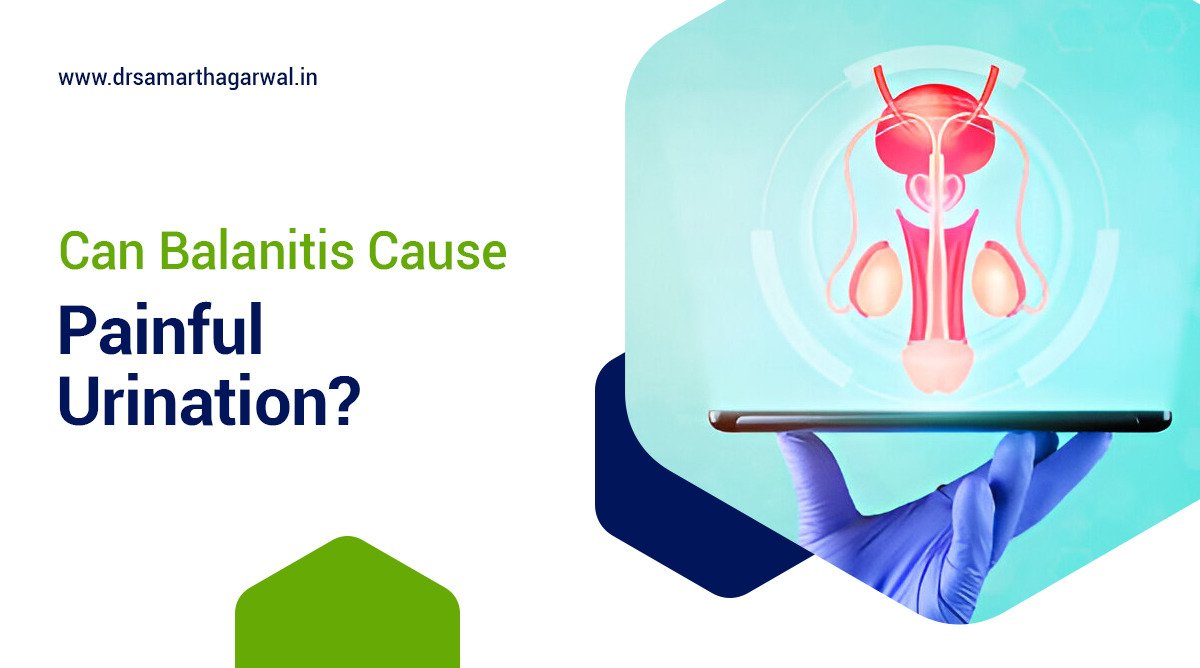Balanitis is a common yet often underestimated condition that can lead to significant discomfort and painful urination for many men at various points in their lives. Understanding this condition, including its causes and symptoms, is essential for effective management and relief. This guide will explain what balanitis is, how it can result in painful urination, the available treatment options ranging from medications to home remedies, and tips for prevention through proper genital hygiene.
What is Balanitis?
Balanitis is the inflammation of the glans penis, which can result in swelling, redness, and moderate to severe pain. It may also cause itching, discomfort during intercourse, and discharge associated with an underlying infection.
The inflammation often disrupts the skin’s natural barrier function, leading to increased sensitivity and the potential for secondary complications. Patients may observe that their symptoms worsen due to hygiene practices or certain irritants.
Recognizing these symptoms is crucial, as prompt diagnosis not only alleviates discomfort but also helps identify potential causes, such as infections, dermatologic conditions, or allergic reactions, which will inform appropriate treatment.
Causes of Balanitis
The causes of balanitis are quite diverse, ranging from infections like yeast infections (Candida) to irritations caused by poor hygiene practices, diabetes, eczema, or a tight foreskin.
These varied factors highlight the importance of maintaining good hygiene in the genital region, as poor hygiene can lead to the overgrowth of harmful microbes. Individuals with diabetes are often more susceptible to infections because high glucose levels create a more favorable environment for pathogens. Additionally, dermatological conditions such as eczema can result in inflammation, making the skin more permeable.
Effective preventive measures against balanitis include:
- Regular washing
- Avoiding irritants found in soaps and detergents
- Consulting a doctor about any underlying health issues that may increase susceptibility to balanitis
By taking proactive measures, individuals can significantly reduce their chances of developing this condition.
Painful Urination as a Symptom
Painful urination is one of the most common symptoms of balanitis, resulting from inflammation of the foreskin and glans.
In some instances, this discomfort may also arise from urinary tract infections, which can exacerbate the balanitis.
It is essential to properly treat and understand this symptom to ensure appropriate intervention and accurately assess the underlying causes of balanitis.
How Balanitis Can Cause Painful Urination?
Balanitis can lead to painful urination due to the inflammation of the glans and foreskin, which can irritate the urinary tract during urination. When the glans and foreskin become inflamed, they exhibit symptoms such as swelling, redness, and increased sensitivity, creating a cycle of pain that extends beyond the genitals.
As the inflamed tissues exert pressure on surrounding structures, individuals may experience sharp, tingling sensations during urination, which can intensify feelings of urgency and distress. Other symptoms of balanitis, including itching, burning, and even discharge, may also arise, further complicating the situation and exacerbating the experience of painful urination.
Treatment Options for Balanitis
The treatment options for balanitis depend on the specific underlying cause but typically include medications such as topical creams, antifungal treatments, and antibiotics to address infections.
In cases of chronic and recurrent balanitis, surgical intervention may be considered, such as circumcision, particularly if inadequate hygiene is a factor that cannot be effectively managed through other means.
- Medications for Balanitis: Apply topical antifungal creams, such as clotrimazole, twice daily to combat yeast infections until symptoms improve.
Antibiotics: Use prescribed topical or oral antibiotics if a bacterial infection is confirmed by your healthcare provider.
Anti-Inflammatory Creams: Use corticosteroid-based creams as directed to reduce inflammation and alleviate discomfort. - Surgical Intervention: Circumcision may be recommended for chronic or recurrent balanitis, especially when poor hygiene contributes to the condition.
- Home Remedies and Supportive Care: Use soothing agents like coconut oil or aloe vera gel to relieve irritation while maintaining the skin’s moisture balance.
Warm Compress: Apply a warm compress gently to ease pain and reduce swelling in the affected area.
Gentle Washing: Clean the genital area with warm water and mild, unscented soap to remove smegma without irritating. - Prevention and Hygiene: Regular cleaning by retracting the foreskin and washing underneath it helps prevent the buildup of smegma that can lead to infection.
Thorough Drying: Ensure the area is completely dried after washing to avoid moisture, which may promote bacterial or fungal growth.
Avoid Irritants: Steer clear of scented soaps, lotions, or harsh chemicals that can exacerbate irritation of the sensitive skin.
Prompt Clothing Change: Change out damp clothing quickly to help maintain a dry environment and reduce the risk of further infections.
Preventing Balanitis and Related Symptoms
Preventing balanitis and its related symptoms is crucial, particularly in children, as proper hygiene can help avoid infections and the discomfort that accompanies them.
Parents and caregivers should be educated on the correct methods for cleaning the penis and foreskin area to effectively prevent balanitis and its associated complications.
Tips for Maintaining Good Genital Hygiene
Treatment options for balanitis are effective in alleviating the symptoms associated with this inflammation of the head of the penis. However, to prevent balanitis from developing and to maintain optimal genital hygiene, it is essential to use proper cleaning methods, particularly in the foreskin area, to minimize irritation and discomfort.
The penis and foreskin should be cleansed regularly to remove smegma, a substance that can accumulate and cause inflammation. It is recommended to wash with warm water and a mild, unscented soap. All areas should be gently rinsed, especially beneath the foreskin, without aggressive scrubbing.
After washing, the area should be dried thoroughly, as moisture can lead to the development of infections. Good personal hygiene practices, such as promptly changing out of wet clothing and avoiding irritants like scented soaps or lotions, can significantly reduce the chances of developing balanitis.
When to See a Doctor
If symptoms of balanitis persist or worsen, it is crucial to consult a doctor or healthcare provider for a proper diagnosis and treatment plan to avoid potential complications.
Continued discomfort, unusual discharge, and redness can lead to more serious health issues, such as infections that spread beyond the genital area.
Early intervention can significantly improve recovery outcomes and help prevent recurring episodes. A timely assessment may also rule out other underlying conditions, such as sexually transmitted infections or skin disorders, each of which requires its own treatment protocols.
Remaining vigilant about changes in health and seeking professional intervention when necessary will help ensure that appropriate care is delivered promptly.

Contact Dr. Samarth Agarwal if you have any questions or concerns about painful urination!




